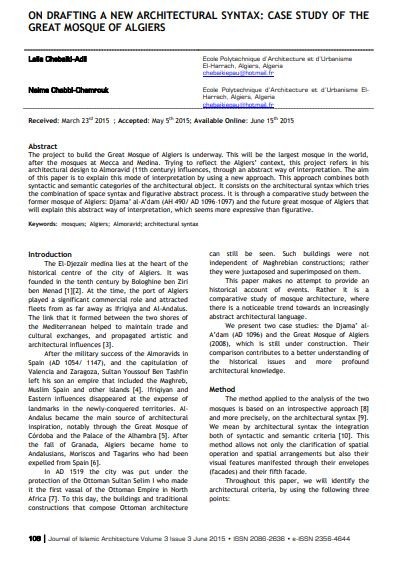
The project to build the Great Mosque of Algiers is underway. This will be the largest mosque in the world, after the mosques at Mecca and Medina. Trying to reflect the Algiers’ context, this project refers in his architectural design to Almoravid (11th century) influences, through an abstract way of interpretation. The aim of this paper is to explain this mode of interpretation by using a new approach. This approach combines both syntactic and semantic categories of the architectural object. It consists on the architectural syntax which tries the combination of space syntax and figurative abstract process. It is through a comparative study between the former mosque of Algiers: Djama’ al-A’dam (AH 490/ AD 1096–1097) and the future great mosque of Algiers that will explain this abstract way of interpretation, which seems more expressive than figurative.
I agree to the terms outlined below:
You agree to upload and assign Mosqpedia Database the rights to use the content worldwide and in perpetuity across all current and future media platforms. Mosqpedia Database may edit, copy, adapt and translate your contribution.
The content will be distributed under the Creative Commons Attribution-Deed – Attribution-NonCommercial-NoDerivatives 4.0 International – Creative Commons
All data will be stored in line with data protection regulations.